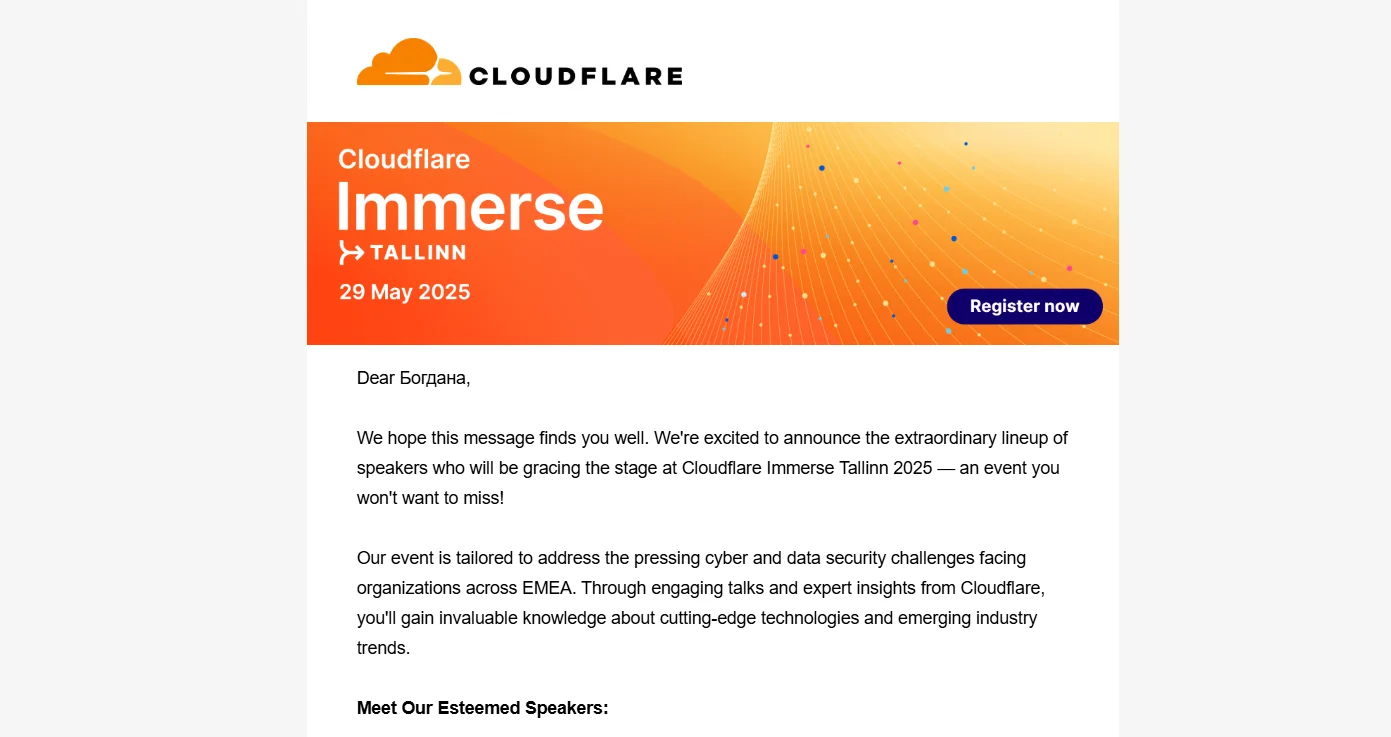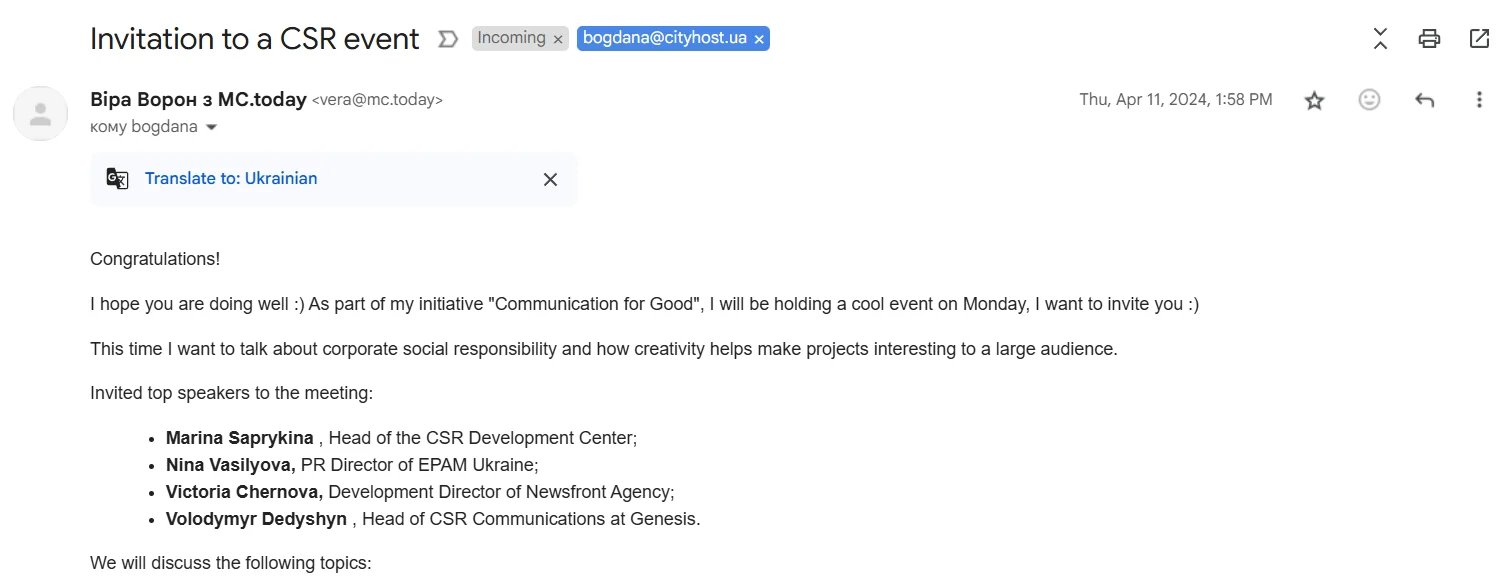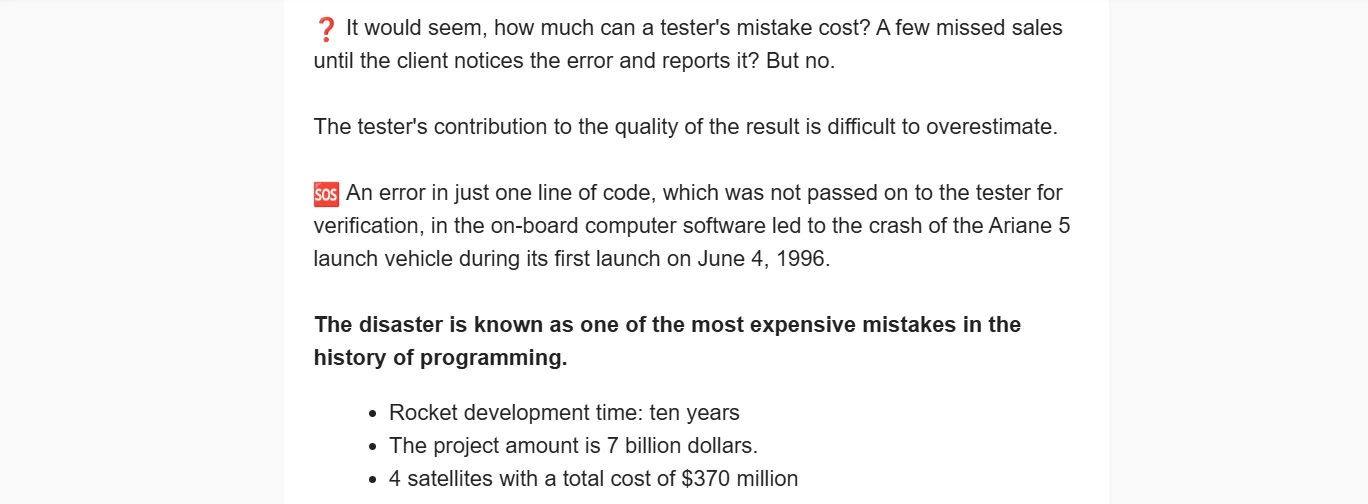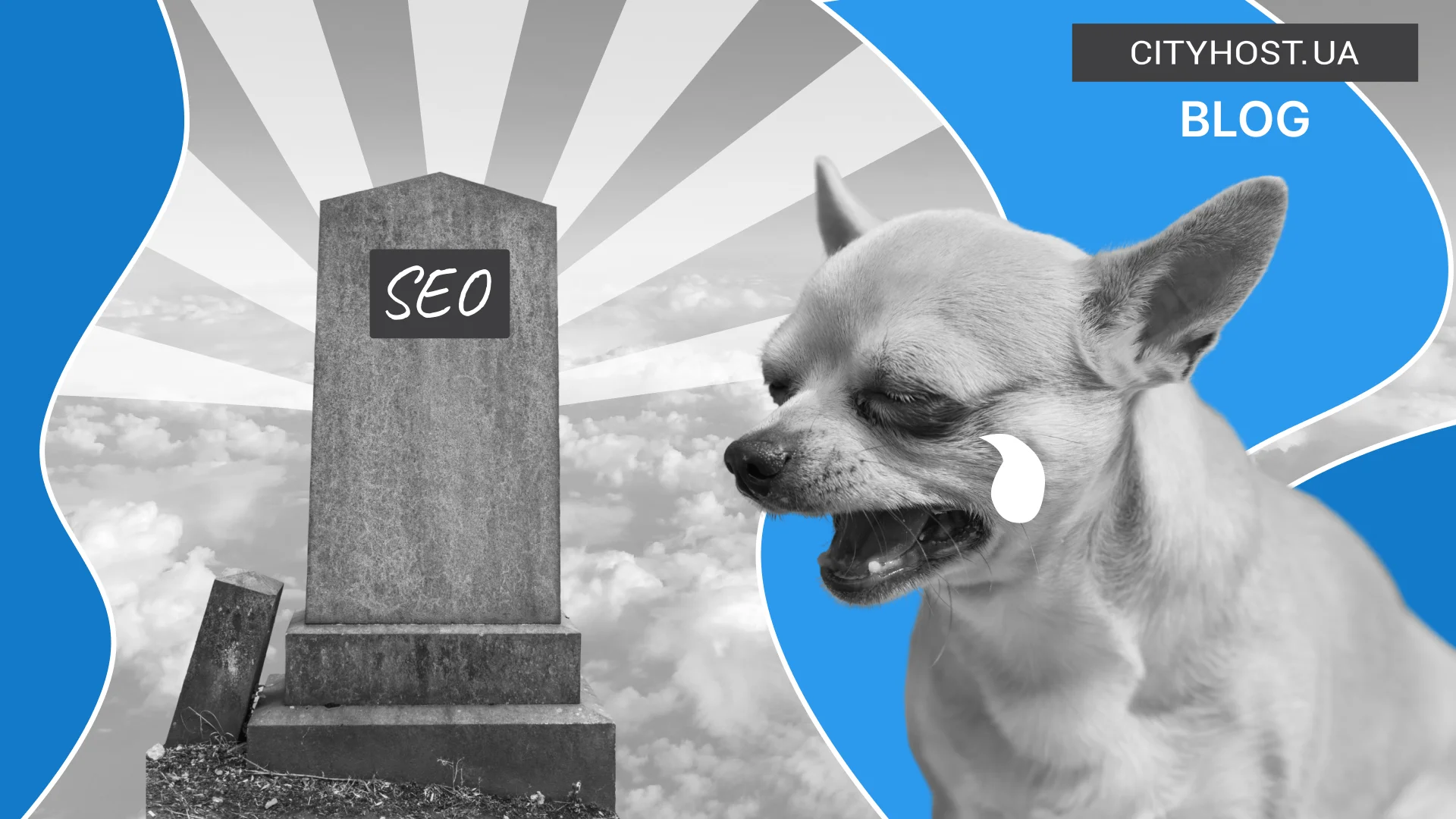
- Why Email Marketing Is Still Relevant
- How Email Newsletters Have Changed in 2025
- Email Funnel for IT: The “5 Steps to a Solution” Strategy
- 5 Tips for Email Marketing in the IT Business
- Email vs Other Channels: Why It Remains Effective
Just a few years ago, it was common to hear that email marketing was no longer relevant. Some wrote in blogs that it was dying out, others discussed it at conferences — saying the channel was done for. But life has made its own adjustments. In 2025, email has not just "survived" — it has become smarter, more human-centered, and much more effective than before. For IT companies and the B2B segment, it’s a real find: when selling isn’t about a single click but a long conversation, it’s important to have a channel where you can conduct that conversation calmly, without noise or rush.
While social networks fight for attention in feeds, and search ads try to catch users at the moment of query, email allows you to act calmly. It’s as if you’re sitting next to the client over a cup of coffee, having a conversation at a pace that’s comfortable for them — without pressure, without being intrusive, but with understanding and value.
It’s important to understand that for mass mailings you need powerful tools, not just sending emails from a Gmail account. You can choose a special paid service for this or set up your own mail server. To do this, you need to rent a dedicated server or a VPS server, and also create email on your own domain. Don’t forget about the proper configuration of SPF, DKIM, and DMARC records, as the successful delivery of emails depends on this.
Read also: How to Launch an Email Server on VPS
Why Email Marketing Is Still Relevant
According to OptinMonster, in 2025 the number of email users worldwide reached about 4.6 billion. It is expected that by 2027 this number will exceed 4.8 billion. At the same time, nearly 376 billion emails are sent daily, and forecasts suggest this volume will grow to 408 billion by 2027. So why should such a powerful communication channel with clients lose its relevance? It is changing and adapting to new challenges, but it continues to be just as useful for business.
Today’s email is no longer just “a blast to everyone”. In 2025, most services can “communicate” with your CRM, see what the user is doing on the website, and even understand what they are leaning toward. All this is thanks to integration with analytics and intelligent segmentation. And this changes the approach itself: you’re not just sending an email hoping someone will see it. You’re responding — to an action, an interest, a request. That’s why it’s no longer pressure but support. A person feels that they’re being spoken to at the right moment — and about what really matters.
How Email Newsletters Have Changed in 2025
Email has changed a lot in recent years. If it used to be just a convenient way to share news or remind people about a discount, today it’s something entirely different. In 2025, it’s no longer about “informing for the sake of it”, but about building relationships. Each email is not a separate piece of content, but part of an ongoing conversation with a person. And if everything is done right, such a dialogue can not only spark interest but gradually lead to a decision. Without pressure. Without rushing.
The main change is that today everything revolves around the individual. Email campaigns have long ceased to look like mass messages “for everyone”. Now you consider what specifically interests the recipient, how they behave on the website, what they respond to, and what they’re already ready for. For example, two people might download the same guide but receive completely different emails — one is already familiar with your product, and the other is just exploring options. Sometimes the platform even decides not to send anything if it senses it’s too early — and that’s also part of caring for the client.
The role of interactivity has significantly increased. In many emails you can already:
- schedule a call or demo presentation;
- respond to a micro-survey directly within the body of the email;
- choose the format for receiving information (video, PDF, case study);
- get a quick reply via integrated chat.
This means that the email is no longer just a “gateway” to the website — it has become an interactive environment in itself. And this noticeably increases engagement: the client doesn’t open the email just to “glance and close”, they begin to act within it.
Another important factor is minimalism in design. Instead of bulky banners, large headlines, and three-column layouts — a light, text-based structure with one or two focus points. This adapts to mobile devices, doesn’t intimidate with its appearance, and allows the reader to focus on the main point: the message itself.

The email is immediately adapted for mobile devices, since many clients read messages on their phones — in a café, on transport, while walking.
In 2025, email is a channel that thinks, responds, and learns. Instead of one general mailing — dozens of small, contextual interactions. And the best part is that you no longer need a team of 10 people for this. Most platforms like HubSpot, Customer.io, or Sendlane automate all key processes: from scenario creation to analytics.
Email Funnel for IT: The “5 Steps to a Solution” Strategy
It all starts with an introduction. A person sees your guide, template, or webinar and leaves their email. This is the entry point. Next, they receive a series of emails that don’t sell but help.
The first email thanks them for their interest and delivers the promised material. It’s short, human, and useful. The next one provides context: “here are three common mistakes in choosing an API integrator”, or “how to build a secure architecture for a SaaS product”. You’re not selling — you’re teaching.

Then comes the moment of authority: case studies, numbers, real stories that prove you’re not just another service. And only after that comes the logical offer: a demo, consultation, or short call. The final email includes social proof and a deadline: “Only this week a free session is available”.
This strategy works well for complex B2B products, where the decision isn’t made in a single click.
5 Tips for Email Marketing in the IT Business
To ensure your email campaigns bring not just email opens, but real leads, sales, and consultation requests, it’s important to consider not only the technical aspects of mailing but also the human factor. It’s emotional connection, consistency, and practical value that build trust in your brand. Below are five tactics that will help your email strategy deliver results.
Build Your List Yourself
There’s nothing worse than a purchased email list. First, it’s questionable from an ethical standpoint. And second, it’s a real risk to your reputation: a high number of complaints, unsubscribes, and spam filters won’t take long to kick in. It’s better to spend a little more time and collect people who are genuinely interested in what you do. These could be subscribers after a webinar, people who downloaded a helpful guide, or attendees of an industry event. These contacts are warm, alive, and open to conversation. And that’s exactly what you need. Read more about the harm of purchased lists in our article about SPAM mailings.
Write Like a Human to a Human
Automation is great, but in 2025 those who keep a human tone in communication will win. Don’t be afraid to use natural language, ask questions, share opinions. Use “you” — informal or formal — depending on your brand’s style.
We could advise adding a real person’s signature and writing their name in the subject line, but… This strategy was relevant quite recently, and at some point, marketers overdid it. Almost all newsletters were signed with the names of specialists (often these senders were even fictitious) — and it started to annoy users, since inside they found a standard promotional message. Therefore, you should find a balance between personalization and the actual need to sign emails with people’s names. It’s better to come up with great subject lines that motivate people to open the email.

One interesting case to remember is from MC.today, when emails were signed by its co-founder Vera Voron. They were written in such a way that her presence in the conversation felt real. Unfortunately, not all newsletter authors could capture this style and create a sense of trust, so the trend of inserting names into the subject line and signing off with them quickly lost popularity.
Expand Your Email Analytics Metrics
An email open doesn’t equal interest. Yes, it’s nice to see that your email was opened. But that doesn’t mean it was read — let alone acted upon. After Apple’s changes to their mail services, some of these opens are even counted as “automatic” by the system.
That’s why it’s important to look deeper. Did they click a link? Reply? Sign up for a call? Or maybe they reread the email twice or left it in their inbox instead of deleting it. These are the signals that truly indicate interest. And these are the metrics you should rely on when planning your next steps in communication.
Test Your Ideas
Ongoing A/B testing is the foundation of an effective email strategy. Test not just subject lines but also structure, tone, CTA format, and block order. Sometimes a small change — like rephrasing a button from “Request a call” to “Get free advice” — can double your conversion rate. Also experiment with days and times of sending, especially if you're working with an international audience.
Create Relatable Stories
Tell stories that people want to try on themselves. People respond better to experiences than to dry information. If your service helped a company reduce request handling time, cut costs, or enabled the team to work faster — talk about it. Not in general terms, but with examples: “We implemented the integration, and within two months the client’s conversion rate doubled”. These kinds of stories are memorable, build trust, and help potential clients see themselves in the shoes of a successful user. Because in the end, no one buys features — they buy change.
Email vs Other Channels: Why It Remains Effective
Each channel in the digital world serves its own purpose. Social media is great for reach — thousands of people can see you in an instant. Search ads catch the user right when they’re looking for something. Messengers are perfect for short, quick messages. But email is a whole different story.
An email isn’t about a spike in attention — it’s about trust that grows over time. That’s why it’s so important for IT companies, where decisions often aren’t made instantly, but after consideration, consultations, and careful weighing. An email can stay in the inbox and be returned to a day or a week later. It can be forwarded to a colleague, reread, or saved “for later”. Sometimes it’s exactly the kind of calm communication that’s missing in the emotional world of social media and advertising. That’s what makes email a channel that not only transmits information — it builds relationships.

While the client is thinking, the company builds trust through compelling stories.
Another plus — format flexibility. In email, you can send anything: from a short message to a deep analytical review, integration examples, or a step-by-step guide on how to use your product. This channel isn’t limited to 280 characters or feed dynamics — you have a full space for arguments, visualization, and calls to action.
Let’s imagine a situation: someone sees your ad on Google. Something catches their eye — maybe the headline or a brief description. They register an account and leave their email, but they’re not ready to take the next step yet. The next day, an email arrives in their inbox. Nothing pushy — just a short message with helpful material. A few days later — another email with an example of how another company solved a similar problem using your product. And just like that, step by step, simple interest gradually turns into trust. And then — a decision to talk, to try, to collaborate.
That’s why email marketing not only remains relevant but becomes the key tool for building deep and effective funnels in 2025.
Email marketing in 2025 is not a relic of the past, but a smart and strategic business tool — one that works with cold leads, explains complex products, and builds trust. It works when it’s built on empathy, consistency, and usefulness for the reader. If your IT company is looking for a channel that not only generates leads but also nurtures them toward the logical next step — email will be your best ally.









